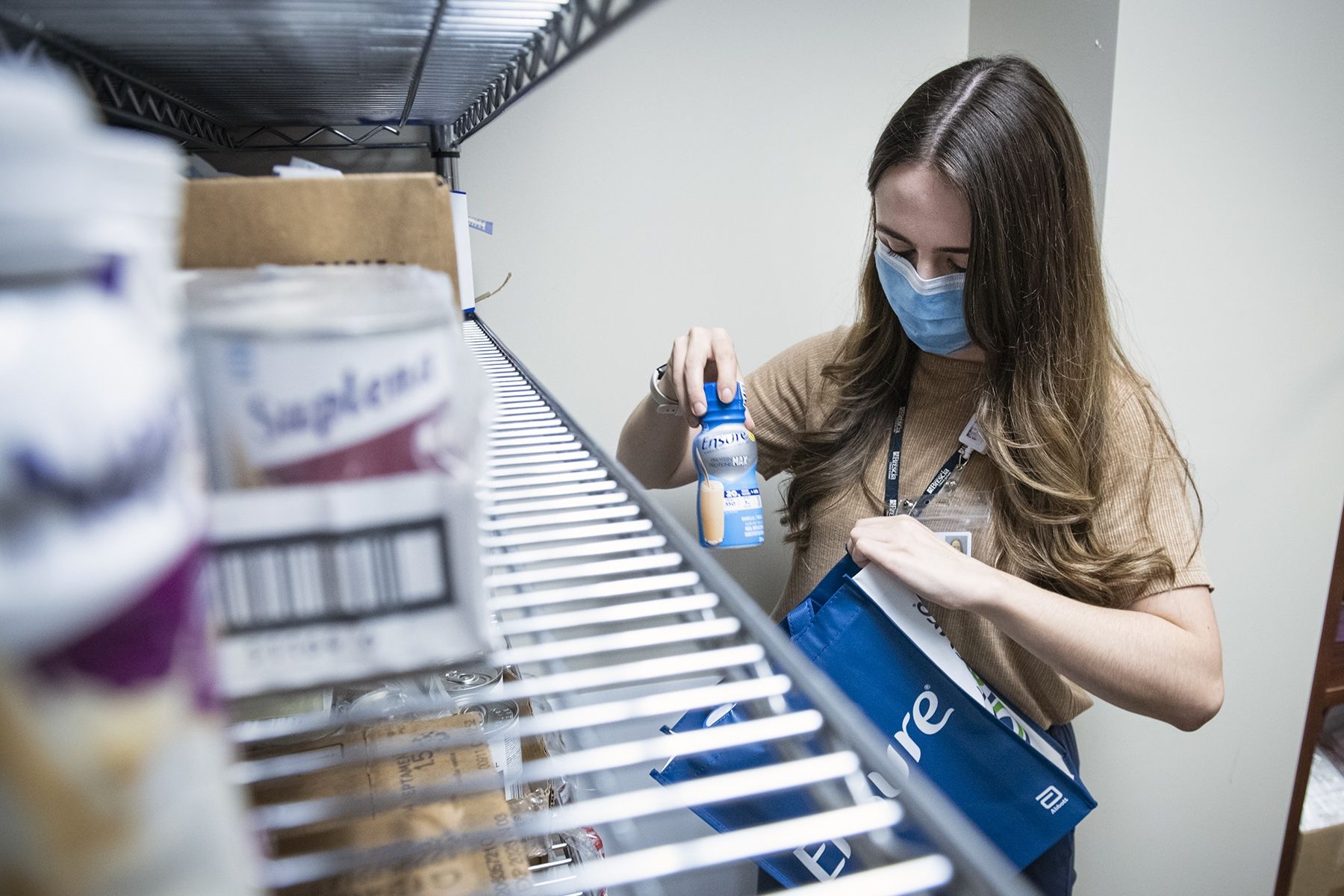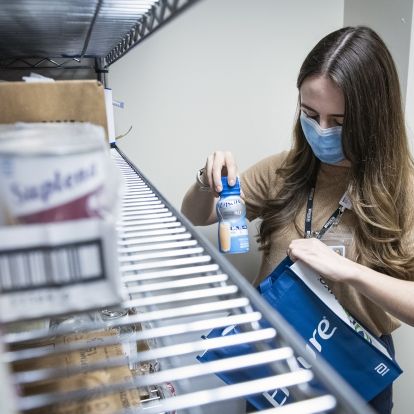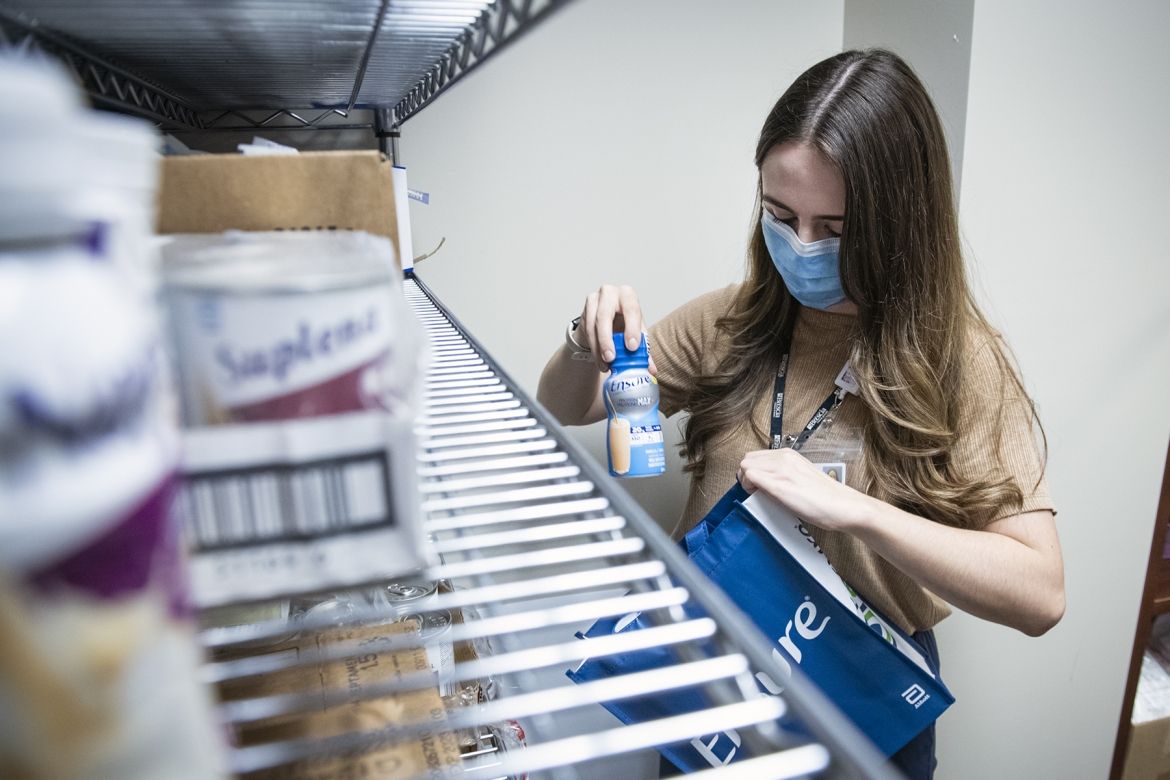Effective immediately masking is required for everyone when present on all inpatient units, in the Emergency Department (ED), the Urgent Care Centre (UCC), and the Children’s Outpatient Centre (COPC).

It’s been in the news a lot lately, and you’ve likely experienced it first-hand at the grocery store checkout: the cost of food is rising, and many Canadians are struggling to keep up. For the teams of dietitians and social workers at Kingston Health Sciences Centre (KHSC), this means supporting more malnourished patients who are struggling with food insecurity.
On some of the medical care floors at Kingston General Hospital site, nearly half the patients admitted for care are also malnourished, but according to registered dietitian Paola Hunter, it isn’t always obvious. “Malnourishment is not always what you may expect. Often patients appear well nourished or are a healthy weight, but then bloodwork reveals they actually have some significant deficiencies. People are coming in with vitamin deficiencies that used to be very uncommon.”
Malnourished patients generally have longer recovery times and can’t bounce back as well as a nourished patient. Often, these same patients face challenging co-morbidities or symptoms related to their treatments, making it even harder to maintain a healthy and balanced diet.
“Malnourished patients have to work harder to get back to a healthy state,” explains Hunter. “We can help them while they are here with us, but unfortunately what we offer are just temporary solutions to a much larger systemic problem.”
According to Statistics Canada, 5.8 million Canadians are struggling with food insecurity, meaning they don’t have reliable access to affordable, nutritious food. In our own community, food-based non-profits are experiencing record levels of people accessing their services. The Partners in Mission Food Bank is already on track to distribute more hampers than ever before in 2022, and hot meal services like Martha’s Table, Lunch by George and St. Vincent de Paul Society are serving up to three times as many meals as they were before the COVID-19 pandemic.
“Many of our patients are living off senior’s pensions, or the Ontario Disability Support Program,” explains Ann Larson, a social worker at KHSC. “The unfortunate reality is buying food is often not a high priority – the cost of rent and utilities sucks up most of their monthly budget, and whatever is leftover is used for food.”
One of these patients is “Joe”, a Brockville resident who lives with diabetes, uses a pacemaker, and drives to Kingston three times a week to receive dialysis treatment. Joe is a pseudonym. He requested we change his name in this story because he faces a lot of stigma and wants to protect his privacy.
“All of my doctors say I need a healthy diet,” Joe says. “But I can’t really pay attention to nutrition because I am limited to what the food bank can provide. I shouldn’t be having too much starch or fat, but you get what you get.”
Dietitians and social workers do everything they can to support patients like Joe, including connecting them with community resources, teaching them skills like reducing food waste and providing some dietary supplements.
“The root of the issue is there are so many people who are living off a very limited income close to or below the poverty line, along with the fact there are not enough social supports,” explains Larson. “We need more people to advocate for this population to have a higher basic income. In the meantime, donating to charities like the food bank and other community meal programs is helpful, but try to call them first and see what is in high demand.”
Are you worried about malnutrition, or food insecurity? Here are a few different resources available for people living in KFL&A:
Gallery


Erin Martin, a registered dietitian with KHSC, preparing nutrition supplements to send home with a patient. Supplements can help malnourished patients, but dietitians warn they are a short term solution to a larger systemic problem.



